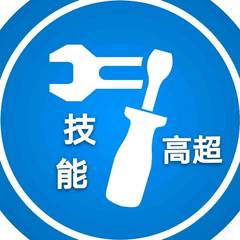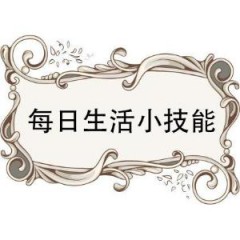什么是蛋壳脑袋规则
"蛋壳脑袋"规则,是指某人有一个像"鸡蛋壳那样薄的脑袋",通常不会对正常人造成伤害的打击却会造成对该人的致命损害。为确定责任,保护受害人,在判断行为与损害之间是否存在因果关系时,应认为存在因果关系并且加害人有"过失"。作出这一判断的最重要原因是,存在损害事实且加害人没有抗辩事由。在"蛋壳脑袋"规则中,应当适用过错责任,而不是公平责任。
如果你轻轻地刮了一个人一巴掌,而碰巧他的脑袋软如蛋壳,结果他头破血流,最终毙命,那么你就必须对他的死负责。法律要求我们必须接受每个个体的特征,即使受害人的体质不正常或过于脆弱,如头盖骨薄如蛋壳,嫌犯还是要对他的行为负责。
蛋壳脑袋规则案例
实例一
美国一八九一年的案例Vosburg v.Putney。一个十一岁的小孩,踢了一个十四岁少年的大腿几下。这个十四岁的少年的脚碰巧有旧患,不堪一击,结果成了一个跛脚。小孩辩解说,他并没有要严重伤害他的意图,谁料到那么三两下的脚踢可以让人残废?可是法官不同意。法官认为,伤害超出预计,并不是一个可以减轻罪行的一个理由。况且,伤人的行为是在学校发生的,而不是户外的草场,小孩的行为是明显不当的。小孩必须向对方作出赔偿。
实例二
1962年发生了这么一件伤人案。两个员工起了争执,其中一个将一个烧红的铁条抛向对方,烧伤了他的皮肤。后来,伤者的伤口慢慢恶化,转为癌症,最终死亡。辩方辩解说:伤者原本已经拥有容易患癌的体质,这是攻击者始料不及的,因此,攻击者不能对伤者的死负责。法官不同意。法官凭着蛋壳脑袋理论,认为攻击者所估计的致伤程度跟案情是不相关的。关键是,攻击者当初根本不该打人。既然打了人,就必须对打人的一切连带后果负责。
不久前,新加坡有多位演员为了宣传新片,坐上开蓬车游街。突然间,有个摩托骑士向演员们丢臭蛋。不巧的是,臭蛋击中了女主角的眼睛,并刺破了她的眼角膜。腐烂的蛋汁随即流入眼球,造成严重伤害。后来经过急救,虽然不至于瞎眼,视力的完全恢复仍需一段时间。如果伤人者被指控,法官绝对不会接受“谁料到臭蛋可以严重致伤眼睛”的理由。当摩托骑士向演员抛臭蛋的那一刻,他就应当作出最坏的打算,并准备为任何的严重的后果负责。
此法律的目的是要警惕世人,必须假设每个人都是豆腐做的,任何伤人的举动,都可能导致最严重的伤害,也可能招来最严重的惩罚。受害者的任何旧患,原有的内伤,都不能用作开脱罪名的理由。动手前,请三思。
The Law
This rule holds one liable for all consequences resulting from his or her tortious (usually negligent) activities leading to an injury to another person, even if the victim suffers an unusually high level of damage (e.g. due to a pre-existing vulnerability or medical condition). The term implies that if a person had a skull as delicate as the shell of an egg, and a tortfeasor who was unaware of the condition injured that person's head, causing the skull unexpectedly to break, the defendant would be held liable for all damages resulting from the wrongful contact, even if
1. such damages were not reasonably foreseeable, or 2. the tortfeasor did not intend to cause such a severe injury.
In criminal law, the general maxim is that the defendant must "take their victims as they find them", a quotation from the judgment of Lord Justice Lawton in R v. Blaue (1975), in which the defendant was held responsible for killing his victim, despite his contention that her refusal of a blood transfusion constituted novus actus interveniens.
The doctrine is applied in all areas of torts - intentional torts, negligence, and strict liability cases - as well as in criminal law. There is no requirement of physical contact with the victim - if a trespasser's wrongful presence on the victim's property so terrifies the victim that he has a fatal heart attack, the trespasser will be liable for the damages stemming from his original tort. The foundation for this rule is based primarily on policy grounds. The courts do not want the accused to rely on the victim's own vulnerability to avoid liability.
The thin skull rule is not to be confused with the related crumbling skull rule in which the plaintiff suffers from a detrimental position (from a prior injury, for instance) pre-existent to the occurrence of the present tort. In the "crumbling skull" rule, the prior condition is only to be considered with respect to distinguishing it from any new injury arising from the present tort - as a means of apportioning damages in such a way that the defendant would not be liable for placing the plaintiff in a better position than they were in prior to the present tort.
Case illustrations in the United States
In the case of Smith v. Leech Brain & Co., an employee in a factory was splashed with molten metal. The metal burned him on his lip, which happened to be premalignant tissue. The judge held that as long as the initial injury was foreseeable, the defendant was liable for all the harm.
In 1891, the Wisconsin Supreme Court came to a similar result in Vosburg v. Putney. In that case, an 11 year old boy kicked a 14 year-old boy in the shin while at school. It turned out that the 14 year-old was recovering from a previous injury. The kick resulted in the boy entirely losing the use of his leg. No one could have predicted the level of injury before the kicking. Nevertheless, the court found that since the kicking was unlawful, and as it occurred during school and not on the playground, the 11 year-old boy was liable for the injury.
In Benn v. Thomas the appellate court determined that the eggshell rule should have been applied to a case in which a man had a heart attack and died after being bruised in the chest during a rear-end car accident.
猜你喜欢内容
-
什么是风险性决策
在财经领域,风险性决策是一种常见但又充满挑战的决策方式。风险性决策指的是在决策过程中,存在多种可...
-
商业险需要什么手续
在如今的社会经济环境中,商业险作为一种重要的风险保障手段,受到了越来越多人的关注。然而,办理商业...
-
没指标是什么意思
例如,在股票投资中,可能指没有特定的技术分析指标来辅助判断股票的走势;在基金投资中,可能意味着没...
-
什么是时点存款
在金融世界中,时点存款是一个具有特定含义和特点的概念。时点存款,简单来说,是指在某个特定时间点上...
-
南方现金通e的特点是什么
南方现金通 e 作为一款在基金市场上备受关注的产品,具有一系列显著的特点,这些特点在理财规划中展现出...
-
什么是产品的品种
在财经领域中,产品的品种是一个重要的概念。简单来说,产品品种指的是具有特定特征和属性的一类产品。...
-
货币资金的管理方法有哪些
货币资金作为企业资产的重要组成部分,其管理的有效性直接影响着企业的运营和发展。合理的货币资金管理...
-
几内亚的货币是什么
几内亚共和国,位于西非西岸,是一个资源丰富但经济发展面临诸多挑战的国家。其法定货币是几内亚法郎。...
-
应收据的定义是什么
在财务管理领域,应收据是一种常见且重要的金融工具。应收据,简单来说,是由付款人或受票人签发,由收...
-
L型经济压力线的含义是什么
在经济领域中,“L 型经济压力线”是一个备受关注的概念。简单来说,L 型经济压力线描述的是经济增长在...






























